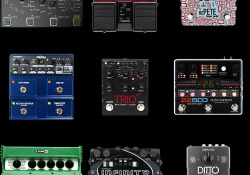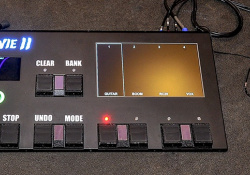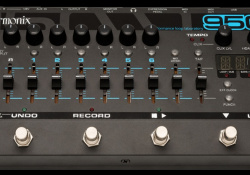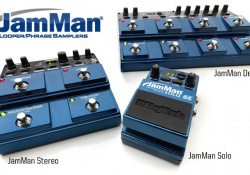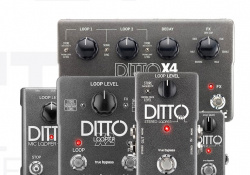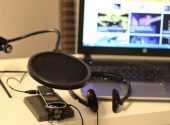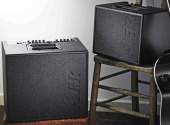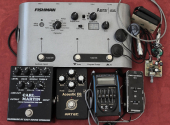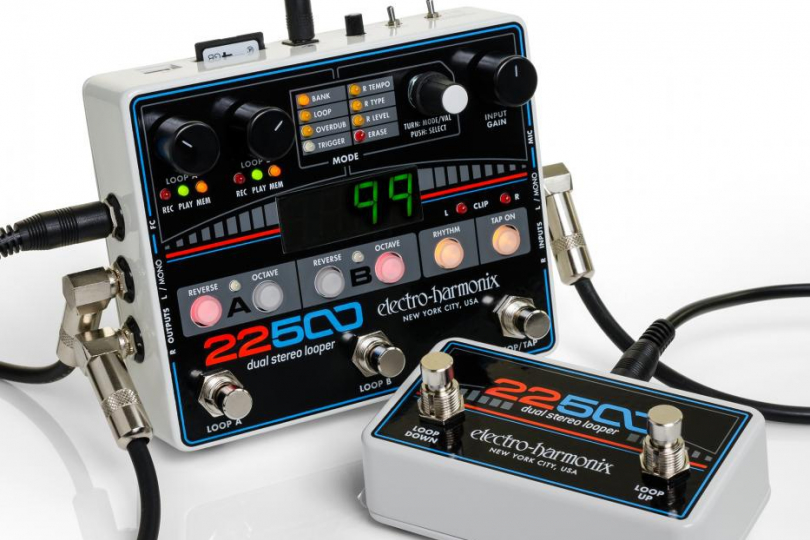
The Handbook for Electro Acoustic Guitarists, Chapter 10: Loopers
In the final part of our electro-acoustic "ten commandments" let’s have a look at a specific effect that is most often used by acoustic guitarists because it allows them to, at least, partially substitute for the band. And if you think back to Ed Sheeran's performances for 150,000 people, such effects may not be just for a few enthusiasts.
So, what exactly is a looper? It's a device that allows you to record, play and layer other musical phrases, which is why it's a great tool for solo songwriters and why you'll see it most often with acoustic guitarists. It will serve not only on stage but also at home for composing, arranging and playing other sounds, samples and noises. Today, there is a plethora of choices from miniature, simple and cheap, through mid-range to incredibly high-end machines.
Often they are part of multieffects or custom combos but I would always look for the easiest maneuverability first and foremost. It's a pretty demanding discipline, after all, and when you start looping you'll first discover with horror how desperately inaccurate your playing is. On the other hand, you improve dramatically with practice. You can take inspiration, for example, from Robert Fripp, its pioneer, KT Tunstall, a famous singer-songwriter, and, of course, the world's brightest star at the moment...
A bit of terminology concerning loopers will definitely come in handy.
Loop – the loop itself
Overdub – another phrase thrown in, there can be several to (infinitely) many
Undo – can remove a loop
Redo – can undo a removed loop
Clear – delete a loop
Record / Overdub / Play – you can immediately pass in another phrase on the first play
Record / Play / Overdub – the initial loop is played first and then you can start adding more of them, depending on how you want to use the looper, both have their advantages and disadvantages. Nowadays you can usually set both options.
Remember that everything is happening in real time and you are supposed to entertain the audience and not bore them with the lengthy creation of many layers, so control that suits your purposes is absolutely essential.
Single button loopers
These are the simplest, and there is a flood of cheap Chinese boxes available today that serve their purpose but you need to keep trying (it happened to me a couple of times that, for example, overdubs were distorted and unusable). Those who are not into such adrenaline sports are more likely to turn to slightly more expensive established manufacturers where these complications do not occur. They usually have only one footswitch and a volume pot. They're tiny, but they don't get used much live because you have to double-foot to stop the loop, and that's not easy when you're on stage alone, singing, and still have other music to make. A feature that can partially replace this on more sophisticated loopers is the so-called end-of-loop stop, where you press the footswitch at any point during the loop and it plays to the end and stops (e.g. Boss RC-3 which is also often modified for this reason by adding switches). Sometimes drum machines are included, but that's a function more for home practice, samples are not very high quality and there is a constant problem of real-time control, which then has to be solved by external switches: and that means a completely different size and ergonomics.
Double/triple button loopers
This is the most interesting category for me because, while still relatively small in size, they have a special stop button that stops the looper with a single step, which after my experience on stage is rather crucial. If you have to stop a two-button looper all the time with a double-step (and unfortunately there are some), then for me personally it's a crime against humanity and I'd fire the development department without notice :). They can be equipped with a lot of other features, so, unfortunately, you have to try them out in detail to see if they suit your particular needs.
Looping stations
These already allow very complex operations and for many years the flagship has been the BOSS RC-505 MKII, although recently other young dynamic successors such as Headrush and Aeros have started to appear in addition to the pioneering Boomerang. A more detailed analysis of these complex devices would take several pages, so you'll have to consider whether they would be suitable for you. Personally, I'd recommend starting with one of the simpler ones and getting to know how a looper works first, then customizing it to your specific needs. For example, they don't suit me personally because of their size and because I wouldn't be able to ergonomically fold my pedalboard.
The ultimate solution in terms of control is then software running on a laptop (e.g. Ableton Live) and controlled by a midi pedal. This was demonstrated to me by the phenomenal Israeli double bassist Adam Ben Ezra, where everything was programmed and things started and stopped by themselves (record, stop, overdub, etc) and he could just focus on the music.
I have been listing all the advantages of looping (apart from the accuracy requirements), but, of course, there are pitfalls. And one of the biggest is modulation. You spend a minute making a great composition and then a chorus comes in (different chords) and suddenly you can be stumped. Of course, more complex loopers allow you to control more loops, but at the cost of a bigger size, complexity and, of course, price. But there are clever tricks to get around this limitation. Youtuber David Shanhun shows a few in the following tutorial.
Looping is a highly personal discipline, and you really need to get a feel for a few devices because it's hard to tell in advance which looper will suit you. They differ in details that are not so obvious in manuals or even video reviews but may be very important for you. For example, Ed Sheeran is not satisfied with any product on the market, so he uses a special custom device called Chewie II, which is actually several gutted Boss RC-20 loopers controlled by an external midi pedal and visualized by a laptop display.
I recently did some in-depth market research in an attempt to fit a new pedalboard to replace my ancient Akai E2, which, while very suitable for me just for the control logic, is quite large and doesn't have enough time for some new songs. I thought that with a simple specification – as small as possible, two footswitches, a single-foot stop and ideally if it could do more loops (verse/refrain) it wouldn't be too difficult, but alas. All the options had a catch for me, and even though I deployed some very creative improvisation, it didn't work live, unfortunately. So in the end I got two loopers, a classic two-button looper and a miniature one that can simply switch verse/refrain, which have been premiered at the famous Czech independent festival Beseda u Bigbítu.
If you have found an error or typo in the article, please let us know by e-mail info@insounder.org.

